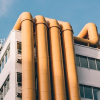When designing or specifying explosion-proof enclosures for hazardous areas, one of the most important considerations is the material of construction. While certifications like IECEx, ATEX, or UL determine if an enclosure meets flameproof or explosion-proof criteria, material selection plays a crucial role in determining how well that enclosure performs over time, particularly in corrosive, humid, or high-impact environments.
Why Material Matters in Hazardous Area Enclosures
Explosion-proof enclosures are not just about containing internal sparks or arcs. They must also survive the harsh environments they’re installed in, often exposed to corrosive chemicals, saltwater, vibration, UV exposure, temperature extremes, or abrasive cleaning.
Choosing the wrong material can lead to:
- Corrosion that compromises sealing surfaces or flamepaths
- Mechanical degradation such as cracking or warping
- Frequent maintenance or early failure, leading to operational downtime or safety risks
This is why material selection is critical, not only for performance but also for lifecycle cost and reliability. Learn more about what explosion proof enclosures are and why they are important in hazardous zones.
SS316 Stainless Steel: High Corrosion Resistance and Durability
SS316, or marine-grade stainless steel, is widely regarded as the most robust and corrosion-resistant material for hazardous area enclosures, particularly in offshore or chemically aggressive environments.
SS316 contains molybdenum, which gives it superior resistance to pitting, crevice corrosion, and salt spray, common in coastal LNG terminals, offshore oil rigs, wastewater treatment plants, and chemical refineries.
Key Advantages:
- Excellent corrosion resistance in marine, acidic, and chemical environments
- High mechanical strength, ideal for rugged installations and mechanical impacts
- Long service life with minimal maintenance
- Aesthetically clean, suitable for high-visibility areas
However, these benefits come at a cost. SS316 enclosures are generally:
- Heavier, making them more difficult to install at height or on pipe racks
- More expensive, due to higher raw material and manufacturing costs
Despite the premium, SS316 is often the best long-term investment for harsh and corrosive environments where reliability is paramount.
Cast Aluminium: Lightweight and Economical for General Industrial Use
Cast aluminium is one of the most common materials used in explosion-proof enclosures due to its balance of strength, weight, and cost. It offers good mechanical durability and is relatively resistant to corrosion, especially when protected with epoxy powder coating or anodizing.
This material is typically used in onshore oil & gas plants, mining sites, and industrial processing facilities, where environmental exposure is moderate and weight reduction is advantageous.
Key Advantages:
- Lightweight and easier to install, especially in elevated or confined spaces
- Cost-effective, offering a good price-performance ratio
- Good thermal conductivity, helping with internal heat dissipation
- Suitable for large-scale electrical installations or control panels
On the downside:
- Aluminium is less corrosion-resistant than SS316, especially in salt-laden or acidic environments
- Pitting corrosion can occur over time if coatings degrade or are scratched
- Flamepath surfaces require careful maintenance to avoid oxidation and loss of certification
For general industrial use in less aggressive environments, aluminium is a highly practical and economical option, especially when maintenance access is straightforward and regular inspections are planned.
GRP (Glass Reinforced Polyester): Corrosion-Proof and Lightweight
GRP, or glass-reinforced polyester, is a non-metallic composite material made from thermosetting polyester resin reinforced with glass fibres. It offers a unique value proposition for explosion-proof enclosures where weight, corrosion resistance, and electrical insulation are priorities.
GRP is increasingly used in industries such as wastewater treatment, marine environments, and utilities, where enclosures may be exposed to water, humidity, or chemicals but not subject to high mechanical impact or flamepath stress.
Key Advantages:
- 100% corrosion-proof, ideal for acidic, humid, or coastal environments
- Lightweight, simplifying installation on poles or mounting structures
- Electrically non-conductive, reduces risk of short circuits or induced voltages
- UV stable and resistant to aging in outdoor exposure
Limitations of GRP enclosures include:
- Lower mechanical strength than metal, prone to cracking or deformation under impact
- Not suitable for Ex d (flameproof) designs that require precision-machined flamepaths
- Typically limited to Ex e (increased safety) or Ex ia (intrinsically safe) applications. Learn more about intrinsic safety.
For low-voltage or instrumentation systems in highly corrosive environments, GRP offers excellent performance at a lower weight and cost. However, it is not suitable for applications requiring direct explosion containment.
Choosing the Right Material for Explosion Proof Enclosures: Application-Based Guidance
The choice between SS316, aluminium, and GRP ultimately depends on a mix of environmental exposure, mechanical demands, certification needs, and budget. Here’s a general guide:
| Environment / Application | Recommended Material | Reasoning |
| Offshore platforms, LNG terminals, marine sites | SS316 Stainless Steel | Highly corrosive environment due to salt spray and humidity, SS316 provides excellent corrosion and pitting resistance, durable under UV, thermal and H₂S exposure. |
| Chemical plants with high corrosion exposure | SS316 or GRP | Presence of corrosive chemicals; SS316 offers high chemical resistance, while GRP is inert and corrosion-proof for non-Ex d applications. |
| General oil & gas or industrial plants | Cast Aluminium | Moderate environmental exposure, cast aluminium is cost-effective, lightweight, and sufficiently durable for Ex d applications with proper coating. |
| Mining and heavy-duty mobile equipment | Aluminium (coated) | Requires lightweight and impact-resistant enclosures; coated aluminium provides strength and vibration resistance suitable for mobile applications. |
| Wastewater treatment, utilities, food plants | GRP or SS316 | Exposure to moisture, cleaning agents, and chemicals; GRP is corrosion-proof and non-conductive, while SS316 is preferred where impact or hygiene compliance is critical. |
| Pole-mounted or remote-area installations | GRP (lightweight) | Weight-sensitive and outdoor installations; GRP is lightweight, corrosion-resistant, UV stable, and suitable for Ex e or Ex ia protection. |
It’s also worth considering hybrid solutions, for example, using SS316 enclosures in high-risk zones and aluminium or GRP enclosures in low-risk areas to balance performance and cost.
Material selection for explosion-proof enclosures is more than just a choice of price or appearance, it is a strategic decision that affects safety, reliability, and long-term performance in hazardous environments.
SS316 offers unmatched durability and corrosion resistance for the most demanding conditions. Aluminium provides a practical, affordable option for many industrial installations. GRP offers a corrosion-proof and lightweight alternative where mechanical demands are lower.
Each material has its place and understanding where and how to use them ensures that your hazardous area equipment will perform as required, maintain certification, and reduce costly downtime.
At Transtech, we supply fire-rated boxes, explosion-proof electrical enclosures, and intrinsically safe components, designed to ensure maximum protection for critical electrical systems in hazardous locations. Our high-performance enclosures guarantee system integrity, even under extreme heat and fire emergencies.
Looking for certified explosion-proof enclosures tailored to your application?
Contact Transtech today and our team can help you choose the right material and tailor based on your environmental, regulatory, and operational needs.







